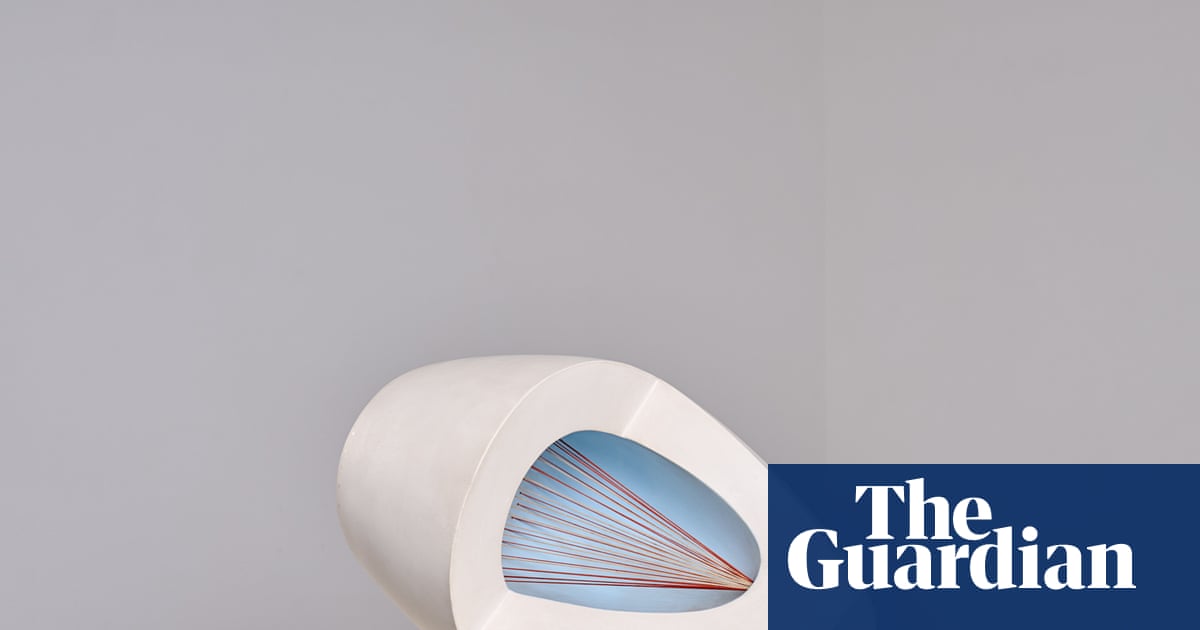A rare wooden carving by the renowned abstract sculptor Barbara Hepworth, regarded as one of the most important artists of the 20th century, has been saved for the nation after a successful appeal to raise £3.8m.
Sculpture with Colour (Oval Form) Pale Blue and Red, created in 1943, marked a breakthrough in Hepworth’s career. One of only a handful of wooden carvings made by her during the 1940s, it is one of the first major such works she made using strings.
In private ownership and rarely seen by the public, the carving can now be acquired as part of the UK’s national collection to go on permanent public display at the Hepworth Wakefield, in Hepworth’s home town in West Yorkshire, for the first time since its creation.
The government placed a temporary export ban on the work when it was sold to an anonymous bidder at Christie’s a year ago to prevent it going overseas and allow time for funds to be raised to keep in it the UK.
A pioneer of abstract sculpture, Hepworth (1903-75) is well known for her innovative stringed works, of which this is one of the earliest and best examples.
Escaping wartime London in 1939, Hepworth moved to Carbis Bay in St Ives with her four young children and second husband, the painter Ben Nicholson, and settled in the area. She had brought only one piece with her to St Ives, the model for Sculpture with Colour, which was finished in 1943.
She initially had little time for work, no studio space, and limited access to materials. In 1943, she moved into a house large enough to have a small studio and was granted a special permit to use wood for sculpting.
The only one of Hepworth’s works to include multicoloured strings, which are pulled taut against a pale blue interior, it reflected Hepworth’s experiences of the Cornish landscape around her.
With more than 2,800 donations from the public and several large grants – including £1.89m from the National Lottery Heritage Fund, and of £750,000 from Art Fund – the acquisition will enhance The Hepworth Wakefield’s ability to tell the full story of Hepworth’s career and pioneering creativity.
after newsletter promotion
Olivia Colling, the interim director and CEO at the Hepworth Wakefield, said: “We think she would have been delighted that so many people have come together to enable her work to be part of a public art collection which can be experienced and enjoyed by so many.”
Richard Deacon, an artist and Art Fund trustee, said: “Barbara Hepworth’s Sculpture with Colour (Oval Form) Pale Blue and Red is a testament to the undaunted spirit of a great artist and to her steadfast belief in an anticipated future. I first saw the sculpture in 1968 when it was included in the Barbara Hepworth retrospective at the Tate.”
The work had made “a deep and lasting impression … It has been a joy to see it again in such wonderful condition. The Hepworth Wakefield is the right home for it, and I’m overjoyed that it will now be held in a public collection in the UK for the benefit of all our and our descendants’ futures.”
